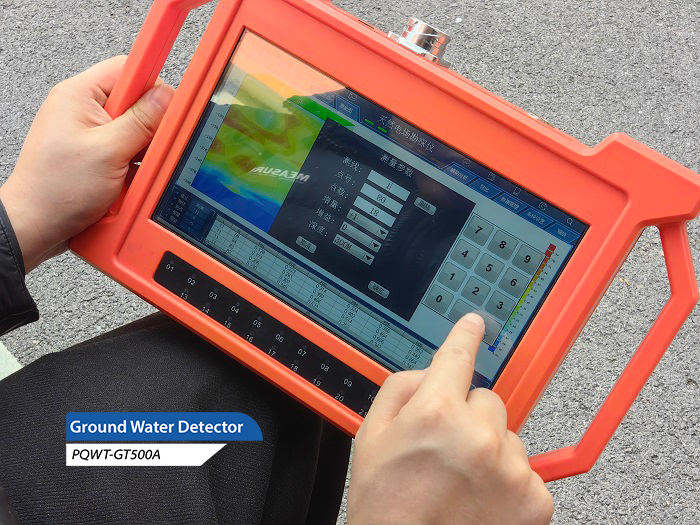In the continuous development of human society, the exploration and utilization of water resources is particularly important, especially in areas facing drought or uneven distribution of water resources. ground water detector, as a kind of high-tech equipment, is widely used in the detailed investigation and exploration of groundwater to meet the needs of drinking water for human and livestock, industrial water and agricultural irrigation, and to effectively alleviate the problem of water shortage. In this paper, we will discuss the working principle of ground water detector and the method of recognizing the detection depth.

Working principle of ground water detector
The core technology of ground water detector is to utilize natural electric field as the source of detection field, and to judge the existence of groundwater based on the change of resistivity of rocks under different geological structures. This device senses the interaction between the natural electric field and the geological structure, and reveals the distribution of groundwater resources by analyzing changes in resistivity and other parameters. Specifically, by monitoring the amplitude and phase of the electromagnetic field, the detector recognizes characteristic signals associated with groundwater, and then deduces the location of potential water sources.
Methods for identifying the depth of detection
The depth of detection of a ground water detector is affected by a number of factors, the most critical of which is the frequency of the electromagnetic waves. Frequency bathymetry is the primary means by which ground water detector can determine the depth of detection. This method is based on the relationship between the penetration ability of electromagnetic waves and frequency: low-frequency electromagnetic waves have greater penetration depths in environments where the resistivity of the underground rock is high, while high-frequency electromagnetic waves penetrate more shallowly in conditions where the resistivity is low. By adjusting the detection frequency and observing the change of electromagnetic field at the fixed point on the surface, the resistivity values at different depths can be calculated, thus reflecting the characteristics of underground geological structure.
Applications and Prospects
With the acceleration of global industrialization, the demand for water resources rises sharply, and the role of ground water detector in water resources construction projects becomes more and more prominent. The ground water detector has become an indispensable tool for large-scale water resources allocation projects such as "South-North Water Diversion" and "Yellow River Diversion", as well as for small-scale groundwater development projects. It not only improves the exploration efficiency and reduces the exploration cost, but also provides scientific basis for the rational development and management of water resources.
To summarize, ground water detector can accurately detect the distribution of underground water sources through advanced frequency bathymetry technology, which provides powerful technical support for solving the problem of water shortage. In the future, with the continuous progress of science and technology, the performance of ground water detector will be further improved, contributing to the sustainable development of human society.








